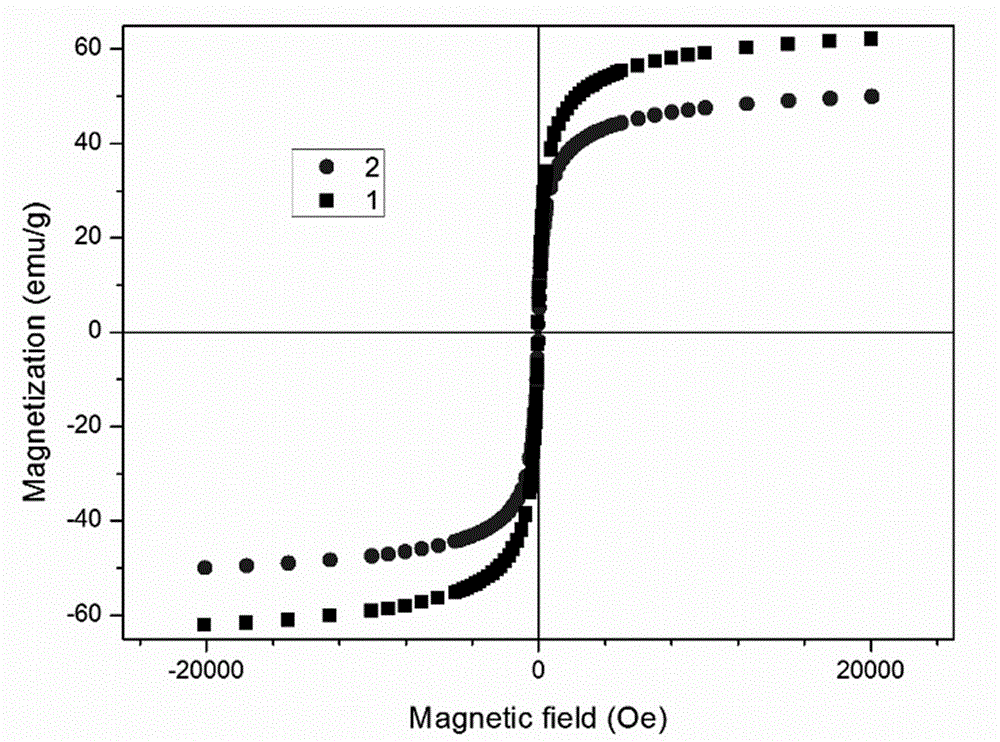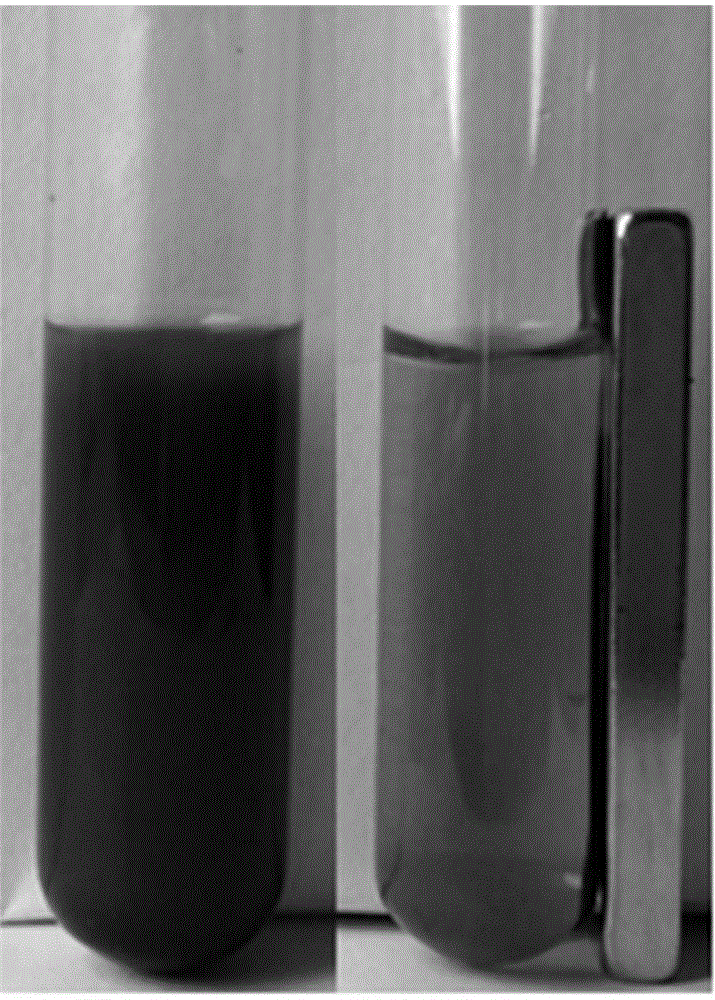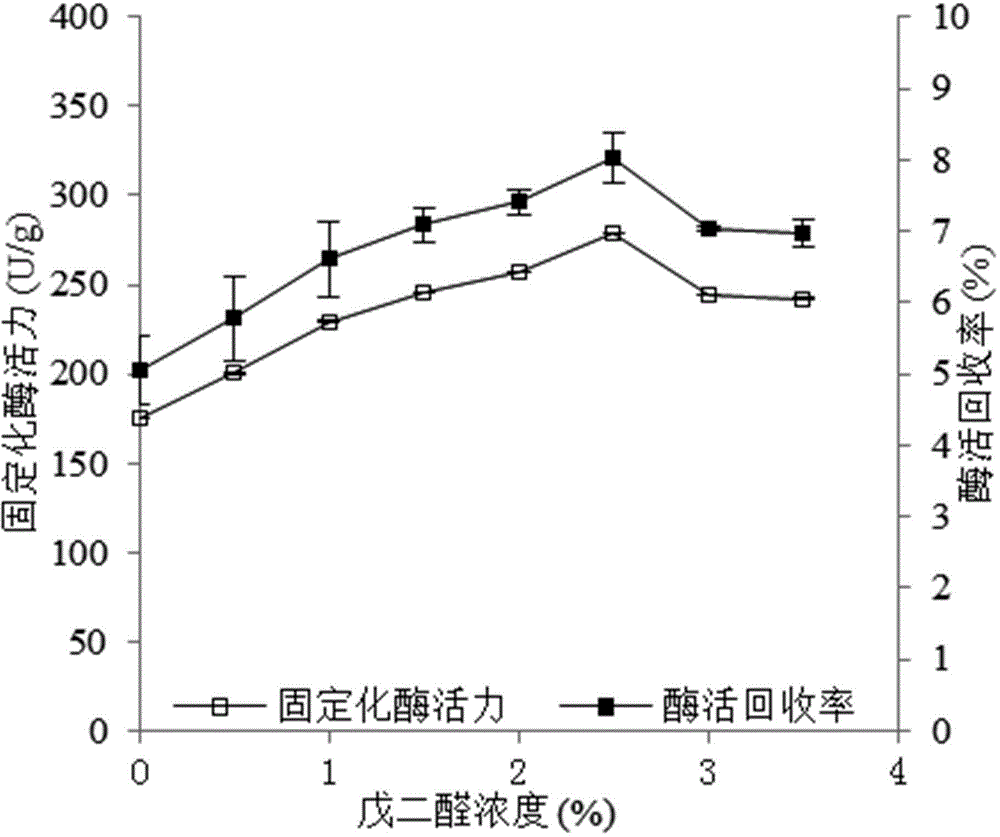Immobilized kappa-carrageenan enzyme and method for preparing kappa-carrageenan oligosaccharide by adopting immobilized kappa-carrageenan enzyme
A technology of carrageenan oligosaccharides and carrageenase, which is applied in the direction of immobilization on or in the inorganic carrier, fermentation, etc., can solve the problems of complicated operation, destruction of the high-level structure of the enzyme, and severe reaction conditions, and achieve good stability and high enzyme efficiency. The effect of high recovery rate and simple process
- Summary
- Abstract
- Description
- Claims
- Application Information
AI Technical Summary
Problems solved by technology
Method used
Image
Examples
Embodiment 1
[0038] Example 1: Preparation of immobilized κ-carrageenase and κ-carrageenan oligosaccharide
[0039] Using Fe 2+ and Fe 3+The ferroferric oxide magnetic nanoparticles were prepared by co-precipitation method, oleic acid was added in the presence of ammonia water for embedding, and then 10 mg / mL oxidant potassium permanganate was added to oxidize the double bond on oleic acid to obtain carboxyl functionalized The Fe3O4 magnetic nanoparticles were freeze-dried and stored at room temperature. Carboxyl-functionalized iron ferric oxide magnetic nanoparticles were cross-linked with glutaraldehyde solution, washed several times with 0.05 M pH 7.5 PBS buffer after cross-linking, and immobilized by adding κ-carrageenan enzyme solution after magnetic separation. After immobilization, the unbound free enzyme was washed several times with 0.05 M PBS buffer solution at pH 7.5 to obtain immobilized κ-carrageenase. The mass volume concentration of glutaraldehyde was 3%, the cross-linkin...
Embodiment 2
[0045] Example 2: Characterization of magnetic properties of magnetic nanoparticles, immobilized κ-carrageenase and magnetic separation effect
[0046] Take the carboxyl-functionalized magnetic nanoparticle carrier and immobilized κ-carrageenanase at room temperature, and measure the magnetic hysteresis loop with a vibrating sample magnetometer (VSM), which shows that the prepared carrier and the immobilized κ-carrageenan Enzymes are magnetic, see Picture 1-1 ; Take 20 mg of immobilized κ-carrageenase in a test tube, add 5 mL of distilled water, shake and mix well, and then use an external magnetic field, that is, a permanent magnet, for magnetic separation. It can be seen that the separation effect is good, see Figure 1-2 .
[0047] Example: 3: Effects of different glutaraldehyde concentrations on the activity of immobilized κ-carrageenase
[0048] Take 20 mg of carboxyl-functionalized magnetic nanoparticles, add 5 mL of glutaraldehyde solution with a concentration of 0, 0...
Embodiment 5
[0051] Example 5: Effects of different fixation times on the activity of fixed κ-carrageenase
[0052] Take 20 mg of carboxyl-functionalized magnetic nanoparticles, add 5 mL of 2.5% (w / v) glutaraldehyde solution, and cross-link at 4°C for 0.5, 1, 2, 3, 4, and 5 h, and the cross-linking is completed. Wash several times with 0.05 M pH 7.5 buffer, add 1 mL of κ-carrageenan enzyme solution with an enzyme activity of 13.9 and U / mL, fix at 4°C for 3 h, and finish the fixation with 0.05 M pH 7.5 buffer Washing several times, applying a magnetic field for magnetic separation to obtain immobilized κ-carrageenase. The measured maximum immobilized enzyme activity and enzyme activity recovery rate were obtained when the crosslinking time was 2 h, which were 311.2 U / g nanoparticles and 44.8%, respectively. The results are shown in Figure 4 .
PUM
 Login to View More
Login to View More Abstract
Description
Claims
Application Information
 Login to View More
Login to View More - R&D
- Intellectual Property
- Life Sciences
- Materials
- Tech Scout
- Unparalleled Data Quality
- Higher Quality Content
- 60% Fewer Hallucinations
Browse by: Latest US Patents, China's latest patents, Technical Efficacy Thesaurus, Application Domain, Technology Topic, Popular Technical Reports.
© 2025 PatSnap. All rights reserved.Legal|Privacy policy|Modern Slavery Act Transparency Statement|Sitemap|About US| Contact US: help@patsnap.com



